The Hartford 2012 Annual Report Download - page 62
Download and view the complete annual report
Please find page 62 of the 2012 The Hartford annual report below. You can navigate through the pages in the report by either clicking on the pages listed below, or by using the keyword search tool below to find specific information within the annual report.-
 1
1 -
 2
2 -
 3
3 -
 4
4 -
 5
5 -
 6
6 -
 7
7 -
 8
8 -
 9
9 -
 10
10 -
 11
11 -
 12
12 -
 13
13 -
 14
14 -
 15
15 -
 16
16 -
 17
17 -
 18
18 -
 19
19 -
 20
20 -
 21
21 -
 22
22 -
 23
23 -
 24
24 -
 25
25 -
 26
26 -
 27
27 -
 28
28 -
 29
29 -
 30
30 -
 31
31 -
 32
32 -
 33
33 -
 34
34 -
 35
35 -
 36
36 -
 37
37 -
 38
38 -
 39
39 -
 40
40 -
 41
41 -
 42
42 -
 43
43 -
 44
44 -
 45
45 -
 46
46 -
 47
47 -
 48
48 -
 49
49 -
 50
50 -
 51
51 -
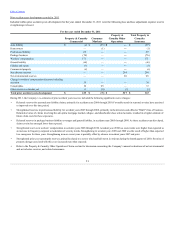 52
52 -
 53
53 -
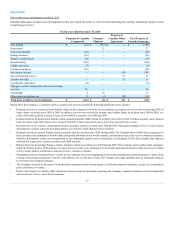 54
54 -
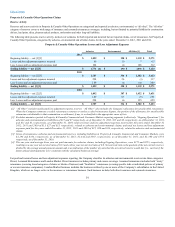 55
55 -
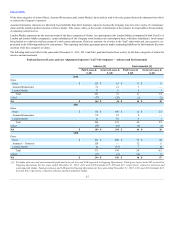 56
56 -
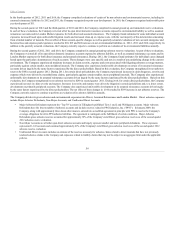 57
57 -
 58
58 -
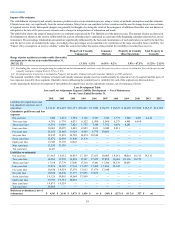 59
59 -
 60
60 -
 61
61 -
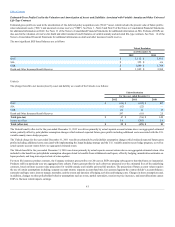 62
62 -
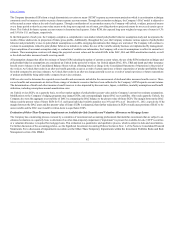 63
63 -
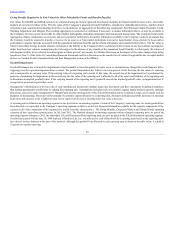 64
64 -
 65
65 -
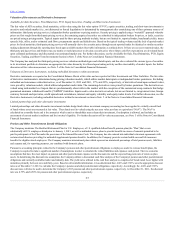 66
66 -
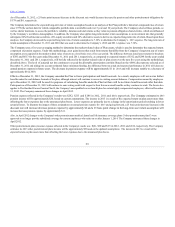 67
67 -
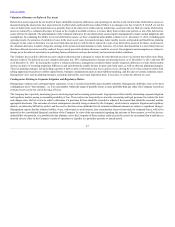 68
68 -
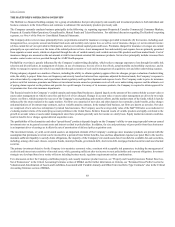 69
69 -
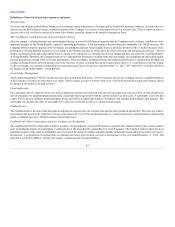 70
70 -
 71
71 -
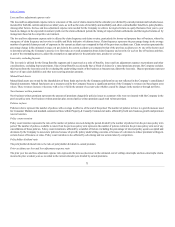 72
72 -
 73
73 -
 74
74 -
 75
75 -
 76
76 -
 77
77 -
 78
78 -
 79
79 -
 80
80 -
 81
81 -
 82
82 -
 83
83 -
 84
84 -
 85
85 -
 86
86 -
 87
87 -
 88
88 -
 89
89 -
 90
90 -
 91
91 -
 92
92 -
 93
93 -
 94
94 -
 95
95 -
 96
96 -
 97
97 -
 98
98 -
 99
99 -
 100
100 -
 101
101 -
 102
102 -
 103
103 -
 104
104 -
 105
105 -
 106
106 -
 107
107 -
 108
108 -
 109
109 -
 110
110 -
 111
111 -
 112
112 -
 113
113 -
 114
114 -
 115
115 -
 116
116 -
 117
117 -
 118
118 -
 119
119 -
 120
120 -
 121
121 -
 122
122 -
 123
123 -
 124
124 -
 125
125 -
 126
126 -
 127
127 -
 128
128 -
 129
129 -
 130
130 -
 131
131 -
 132
132 -
 133
133 -
 134
134 -
 135
135 -
 136
136 -
 137
137 -
 138
138 -
 139
139 -
 140
140 -
 141
141 -
 142
142 -
 143
143 -
 144
144 -
 145
145 -
 146
146 -
 147
147 -
 148
148 -
 149
149 -
 150
150 -
 151
151 -
 152
152 -
 153
153 -
 154
154 -
 155
155 -
 156
156 -
 157
157 -
 158
158 -
 159
159 -
 160
160 -
 161
161 -
 162
162 -
 163
163 -
 164
164 -
 165
165 -
 166
166 -
 167
167 -
 168
168 -
 169
169 -
 170
170 -
 171
171 -
 172
172 -
 173
173 -
 174
174 -
 175
175 -
 176
176 -
 177
177 -
 178
178 -
 179
179 -
 180
180 -
 181
181 -
 182
182 -
 183
183 -
 184
184 -
 185
185 -
 186
186 -
 187
187 -
 188
188 -
 189
189 -
 190
190 -
 191
191 -
 192
192 -
 193
193 -
 194
194 -
 195
195 -
 196
196 -
 197
197 -
 198
198 -
 199
199 -
 200
200 -
 201
201 -
 202
202 -
 203
203 -
 204
204 -
 205
205 -
 206
206 -
 207
207 -
 208
208 -
 209
209 -
 210
210 -
 211
211 -
 212
212 -
 213
213 -
 214
214 -
 215
215 -
 216
216 -
 217
217 -
 218
218 -
 219
219 -
 220
220 -
 221
221 -
 222
222 -
 223
223 -
 224
224 -
 225
225 -
 226
226 -
 227
227 -
 228
228 -
 229
229 -
 230
230 -
 231
231 -
 232
232 -
 233
233 -
 234
234 -
 235
235 -
 236
236 -
 237
237 -
 238
238 -
 239
239 -
 240
240 -
 241
241 -
 242
242 -
 243
243 -
 244
244 -
 245
245 -
 246
246 -
 247
247 -
 248
248 -
 249
249 -
 250
250 -
 251
251 -
 252
252 -
 253
253 -
 254
254 -
 255
255 -
 256
256 -
 257
257 -
 258
258 -
 259
259 -
 260
260 -
 261
261 -
 262
262 -
 263
263 -
 264
264 -
 265
265 -
 266
266 -
 267
267 -
 268
268 -
 269
269 -
 270
270 -
 271
271 -
 272
272 -
 273
273 -
 274
274 -
 275
275 -
 276
276 -
 277
277 -
 278
278 -
 279
279 -
 280
280 -
 281
281 -
 282
282 -
 283
283 -
 284
284 -
 285
285 -
 286
286 -
 287
287 -
 288
288 -
 289
289 -
 290
290 -
 291
291 -
 292
292 -
 293
293 -
 294
294 -
 295
295 -
 296
296 -
 297
297 -
 298
298 -
 299
299 -
 300
300 -
 301
301 -
 302
302 -
 303
303 -
 304
304 -
 305
305 -
 306
306 -
 307
307 -
 308
308 -
 309
309 -
 310
310 -
 311
311 -
 312
312 -
 313
313 -
 314
314 -
 315
315 -
 316
316 -
 317
317 -
 318
318 -
 319
319 -
 320
320 -
 321
321 -
 322
322 -
 323
323 -
 324
324 -
 325
325 -
 326
326 -
 327
327 -
 328
328 -
 329
329 -
 330
330 -
 331
331 -
 332
332 -
 333
333 -
 334
334 -
 335
335
 |
 |

Table of Contents
Estimated Gross Profits Used in the Valuation and Amortization of Assets and Liabilities Associated with Variable Annuity and Other Universal
Life-Type Contracts
Estimated gross profits are used in the amortization of: the deferred policy acquisition costs ("DAC") asset, which includes the present value of future profits;
sales inducement assets (“SIA”); and unearned revenue reserves (“URR”). See Note 1, Note 2 and Note 8 of the Notes to Consolidated Financial Statements
for additional information on DAC. See Note 11 of the Notes to Consolidated Financial Statements for additional information on SIA. Portions of EGPs are
also used in the valuation of reserves for death and other insurance benefit features on variable annuity and universal life-type contracts. See Note 10 of the
Notes to Consolidated Financial Statements for additional information on death and other insurance benefit reserves.
The most significant EGP based balances are as follows:
DAC $5,112 $5,931
SIA $ 325 $ 434
URR $ 1,880 $ 1,708
Death and Other Insurance Benefit Reserves $1,942 $2,308
Unlocks
The (charge) benefit to net income (loss) by asset and liability as a result of the Unlocks is as follows:
DAC $(144) $ (419) $ 107
SIA (82)(22) —
URR 26 40 17
Death and Other Insurance Benefit Reserves 247 (333)25
$47 $(734) $ 149
Income tax effect 16 (261) 56
The Unlock benefit, after-tax for the year ended December 31, 2012 was driven primarily by actual separate account returns above our aggregated estimated
return, partially offset by policyholder assumption changes which reduced expected future gross profits including additional costs associated with the U.S.
variable annuity macro hedge program.
The Unlock charge for the year ended December 31, 2011 was driven primarily by policyholder assumption changes which reduced expected future gross
profits including additional costs associated with implementing the Japan hedging strategy and the U.S. variable annuity macro hedge program, as well as
actual separate account returns below our aggregated estimated return.
The Unlock benefit for the year ended December 31, 2010 was driven primarily by actual separate account returns above our aggregated estimated return. Also
included in the benefit are policyholder assumption changes related to benefits from withdrawals and lapses, offset by hedging, annuitization estimates on
Japan products, and long-term expected rate of return updates.
For most life insurance product contracts, the Company estimates gross profits over 20 years as EGPs emerging subsequent to that timeframe are immaterial.
Products sold in a particular year are aggregated into cohorts. Future gross profits for each cohort are projected over the estimated lives of the underlying
contracts, based on future account value projections for variable annuity and variable universal life products. The projection of future account values requires
the use of certain assumptions including: separate account returns; separate account fund mix; fees assessed against the contract holder’s account balance;
surrender and lapse rates; interest margin; mortality; and the extent and duration of hedging activities and hedging costs. Changes in these assumptions and,
in addition, changes to other policyholder behavior assumptions such as resets, partial surrenders, reaction to price increases, and asset allocations causes
EGPs to fluctuate which impacts earnings.
61
